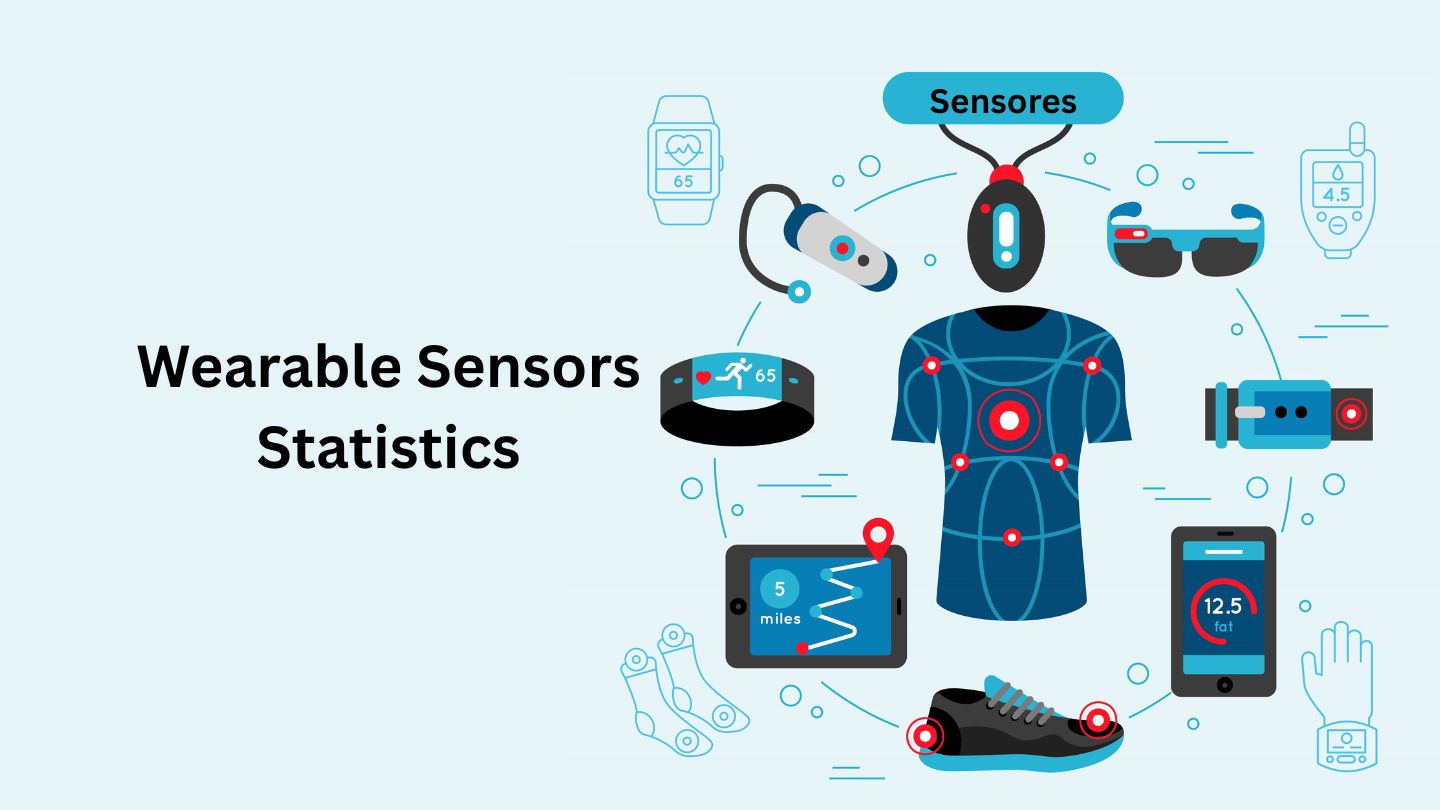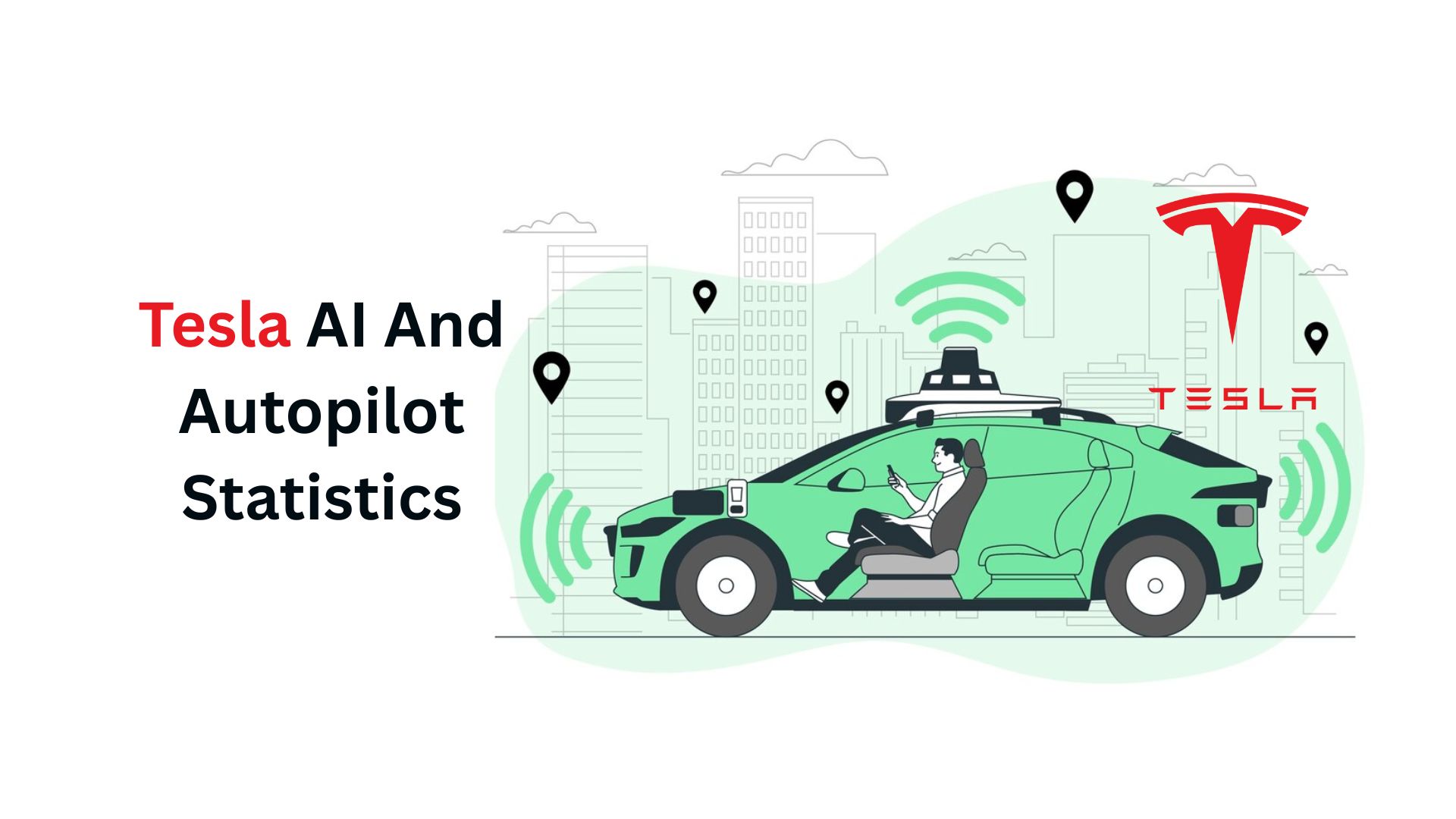Vacuum Cleaner Statistics and Facts (2025)

Updated · Apr 01, 2025


TABLE OF CONTENTS
Introduction
Vacuum Cleaner Statistics: Vacuum cleaners are integral to maintaining cleanliness in households, with their energy consumption varying by type and usage. Traditional vacuum cleaners typically consume between 500 and 3,000 watts per hour, averaging around 1,400 watts. In contrast, robotic vacuum cleaners are more energy-efficient, using approximately 60 to 100 watts per hour.
The average U.S. household spends about USD 0.11 per hour to operate a standard vacuum cleaner. Regular maintenance, such as cleaning filters, can enhance efficiency and reduce energy costs. These figures underscore the importance of selecting and maintaining vacuum cleaners to optimize energy consumption and cost-effectiveness.
Editor’s Choice
- The worldwide vacuum cleaner market is expected to grow steadily from 2024 to 2029, with total earnings increasing by USD 8.9 billion (+19.69%).
- The market is predicted to reach a record high of USD 54.12 billion by 2029 after seven straight years of growth.
- According to Vacuum Cleaner Statistics, the robotic vacuum cleaner industry has expanded over the years. In 2018, the market was valued at USD 1.84 billion, and by 2025, experts anticipate it will reach USD 4.98 billion.
- As of 2023, the total vacuum cleaner industry was valued at USD 13.65 billion. It is expected to expand at a yearly growth rate (CAGR) of 10.0% from 2024 to 2030.
- Among different types, canister vacuums had the highest revenue share in 2023 (about 25%), as they are popular for their ability to clean multiple surfaces, fit in small spaces, and move around obstacles easily.
- Robotic vacuums are predicted to grow the fastest between 2024 and 2030 as more customers seek easy, automatic cleaning solutions.
- Additionally, online sales of vacuum cleaners are expected to increase significantly during this period.
- The commercial vacuum segment will likely expand the most as more businesses and public places focus on hygiene and cleanliness.
- The global vacuum cleaner industry had revenue of USD 47.26 billion in 2022. It is estimated to grow at a compound annual growth rate (CAGR) of 7.1% from 2023 to 2032, reaching USD 93.84 billion by 2032.
- The Asia-Pacific region is expected to experience the fastest growth during this time.
Types of Vacuum Cleaners
When shopping for a new vacuum cleaner, several key factors should be taken into consideration before making a decision. Factors such as your home’s size, layout, and flooring type play a significant role in selecting the best model.
With numerous options, selecting the right vacuum can be daunting. To make it easier, here is a breakdown of the different types of vacuum cleaners and their benefits.
#1. Canister Vacuums
Canister vacuums have a separate motor and dust container connected to the cleaning head by a hose. They work well on hard floors and large open spaces.
- Pros: Strong suction, works on multiple surfaces, quieter than other models, lightweight hose and wand
- Cons: Bulky, harder to store, less portable, requires moving the canister between rooms and managing cords
- Best for: Hardwood floors and large homes
#2. Corded Vacuums
These traditional vacuums plug into an electrical outlet and usually have retractable cords for easy storage.
- Pros: Powerful, unlimited runtime, works on various surfaces, and cost-effective
- Cons: Heavy, needs cord management, takes up space, can be loud
- Best for: Deep-cleaning carpets and large spaces
#3. Upright Vacuums
Upright vacuums stand vertically and combine the motor, dirt container, and cleaning head into one unit.
- Pros: High power, easy to use, wide cleaning path, compact storage, cordless models offer better portability
- Cons: Heavier than other vacuums, not great for stairs or tight spaces, limited battery life in cordless versions
- Best for: Carpets and large open areas
#4. Cordless & Stick Vacuums
Stick vacuums are slim and lightweight, ideal for small—to mid-sized homes. Some models come with a cord, while others run on batteries.
- Pros: Lightweight, easy to carry, cord-free convenience, compact, quiet
- Cons: Battery needs recharging, less powerful suction, small dustbin, pricey, not ideal for deep cleaning
- Best for: Hard floors and quick cleanups
#5. Robot Vacuums
These smart vacuums use sensors and mapping technology to navigate and clean your home automatically.
- Pros: Hands-free, compact, quiet, works on multiple surfaces, advanced tech features
- Cons: Less powerful suction, a small dustbin in some models, battery-dependent, struggles with deep cleaning, and older models may have navigation issues.
- Best for: Hard floors and light cleaning in homes with minimal clutter
#6. Handheld Vacuums
Handheld vacuums are small, portable, and great for quick cleanups. Many models are battery-powered for convenience.
- Pros: Lightweight, compact, easy to use, great for small messes, budget-friendly
- Cons: Weaker suction, short battery life, small dustbin, not ideal for large cleaning tasks
- Best for: Upholstery, car interiors, and hard-to-reach areas
#7. Wet/Dry Vacuums
These vacuums can clean up both liquids and dry debris, making them ideal for heavy-duty cleaning jobs.
- Pros: Strong suction, handles both wet and dry messes, durable, large capacity, works on different surfaces
- Cons: Bulky, difficult to store, less portable, noisy, and requires frequent maintenance.
- Best for Garages, workshops, and large spills
#8. Carpet Cleaners
Carpet cleaners use water and cleaning solutions to remove deep stains and odors, making them great for homes with pets or kids.
- Pros: Powerful suction, built-in cleaning solution system, covers large areas, specialized attachments
- Cons: Heavy carpets need drying time and require maintenance, and corded models can be inconvenient
- Best for: Deep-cleaning carpets and rugs in high-traffic homes
#9. Steam Mops
Steam mops use heated steam to sanitize and clean sealed hard floors without chemicals.
- Pros: Chemical-free cleaning, dries quickly, lightweight, easy to manoeuvre, comes with attachments
- Cons: Works only on sealed hard floors, small water tank, lacks suction, limited portability, may damage sensitive surfaces
- Best for: Sanitizing sealed hardwood and tile floors
#10. Central Vacuums
These high-power vacuums have a separate motor unit installed in a different part of the house, with long hoses connecting to different areas.
- Pros: Strong suction, quiet operation, works on multiple surfaces, long-lasting system, convenient
- Cons: Expensive, not suitable for small homes, requires installation
- Best for: Large homes requiring deep cleaning
#11. Backpack Vacuums
Worn like a backpack, these vacuums are often used for commercial cleaning or deep-cleaning large areas.
- Pros: Strong suction, ergonomic design, works on various surfaces, lightweight wand and hose, efficient for big spaces
- Cons: Can be heavy to wear, cord management needed in wired models, may require training, tricky to store, limited battery life in cordless versions
- Best for: Commercial cleaning and large spaces with heavy foot traffic.
Household Vacuum Cleaner Statistics
- The global market for household vacuum cleaners was worth USD 25.9 billion in 2024. It is estimated to grow from USD 27.3 billion in 2025 to USD 42.5 billion by 2034, with an average annual growth rate (CAGR) of 5%.
- Many people now prefer cordless and battery-powered vacuums because improved battery technology has made them last longer and work better, making them a more convenient choice for households.
- Additionally, smart home technology has enabled vacuum manufacturers to incorporate Wi-Fi connectivity, app controls, and voice commands into their devices. These features let users start cleaning remotely, track progress, and receive maintenance alerts.
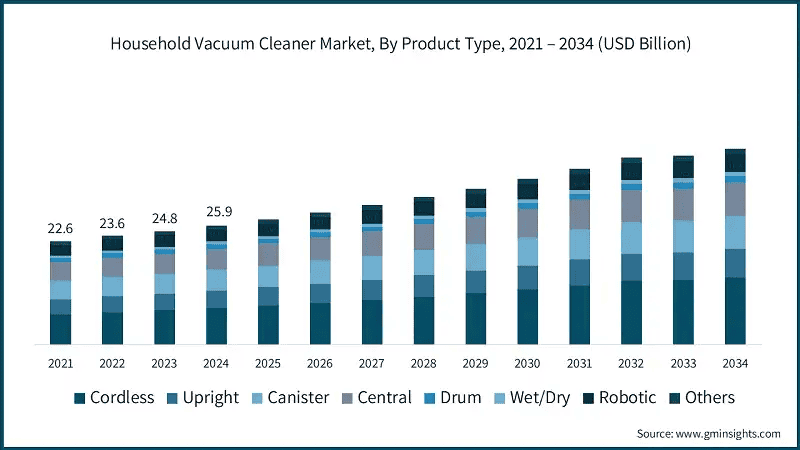
(Source: gminsights.com)
- Vacuum Cleaner Statistics stated that over 60% of vacuum cleaners made in 2023 had smart features.
- Some models even use artificial intelligence (AI) and machine learning to adjust their cleaning patterns based on home layouts and floor types.
- Many modern buyers also prefer multi-purpose appliances, which has led to a rise in vacuum cleaners that offer multiple functions.
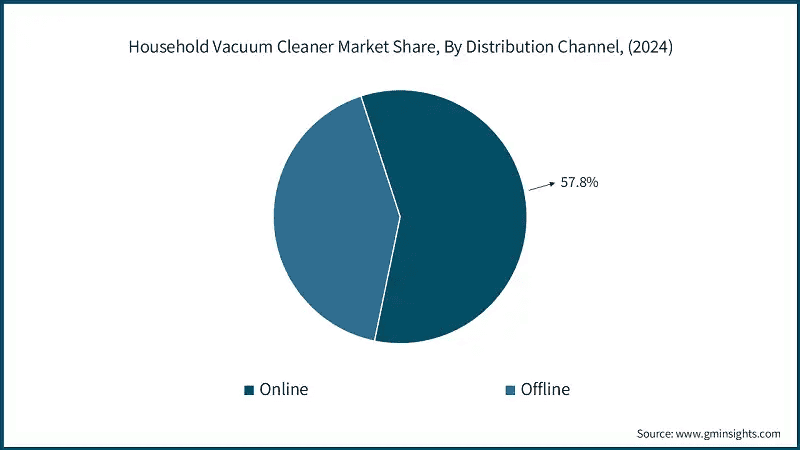
(Source: gminsights.com)
The household vacuum cleaner industry includes different types of products, each catering to various cleaning needs. These key categories include:
- Cordless vacuums held the largest market share, valued at USD 7.9 billion in 2024, and are expected to reach USD 14.2 billion by 2034.
- Robotic vacuums are in demand due to their smart navigation and automation features, requiring minimal manual effort.
- Stick vacuums are preferred for being lightweight, cordless, and easy to use, offering a balance of power and convenience.
- Upright vacuums are known for their strong suction power and wide cleaning path, making them suitable for large carpeted areas.
- Canister vacuums are easy to manoeuvre, making them ideal for hard floors and smaller spaces.
- Handheld vacuums are optimal for quick cleanups on furniture, stairs, and tight spaces.
- Each vacuum type serves a specific cleaning need, making the market highly adaptable to different consumer preferences.
- The vacuum cleaner market is divided into online and offline sales channels.
- The offline segment accounted for 57.8% of total sales in 2024 and is estimated to continue expanding by 2034.
- Vacuum Cleaner Statistics stated that physical stores such as electronics shops, department stores, and specialty retailers remain popular shopping methods.
- Many customers prefer buying in person so they can see, touch, and test vacuum models before purchasing.
- Trained sales representatives provide expert advice, helping shoppers choose the best vacuum for their needs.
- The U.S. vacuum cleaner market is growing at a rate of 5% per year. American buyers tend to choose models that offer smart technology, cordless convenience, and powerful suction.
- Vacuum Cleaner Statistics stated that the demand for vacuum cleaners with app controls, voice activation, and multi-function capabilities is increasing.
- Many consumers are also focusing on health and hygiene, leading to higher sales of vacuums with HEPA filters that trap allergens and air pollutants, improving indoor air quality.
The vacuum cleaner industry is highly competitive, with major brands like:
- Philips, Dyson, LG, Panasonic, and Samsung each hold a 10%-15% share of the market.
- Philips is the top brand due to its wide product selection, strong reputation, and advanced technology.
Recent Industry Updates
- June 2023: Dyson launched a new cordless vacuum featuring improved suction and extended battery life.
- September 2023: iRobot (maker of Roomba) secured a USD 1.7 billion deal, reinforcing its dominance in the robotic vacuum industry.
- March 2024: Hoover partnered with Amazon, allowing its newest vacuum models to be controlled by voice using Alexa.
Smart Robot Vacuum Cleaner Statistics
- The global market for robot vacuum cleaners was worth USD 4.80 billion in 2023. It is expected to increase by 13.7% annually, reaching USD 9.12 billion within the next few years.
- Smart homes are becoming more common—by 2024, there will be 78 million smart homes in North America, driving demand for advanced robot vacuums.
- In 2022, about 59.5% of smart robot vacuums were used in business settings, while the rest were used for home cleaning.
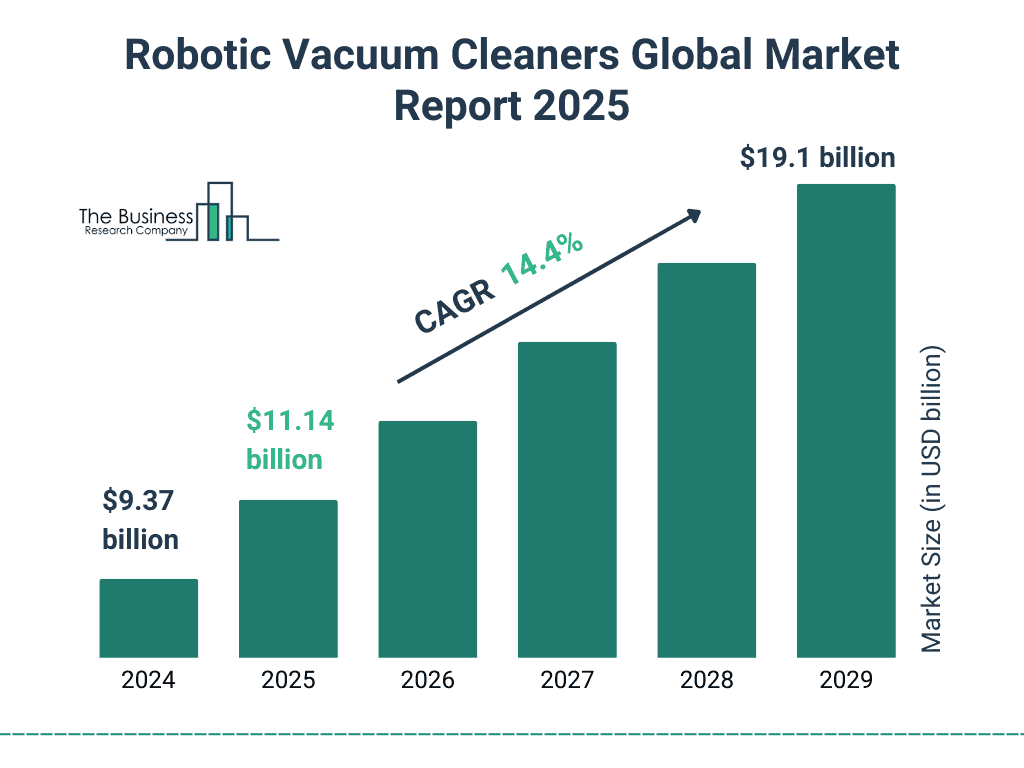
(Source: thebusinessresearchcompany.com)
- Robot vacuums with remote control features are expected to see the fastest growth by 2028.
| Product Type | Approx. Revenue Share (2024) | Growth Trend Through 2030 |
|
Robotic Vacuums |
~20–25% | Fastest-growing segment (10.6% CAGR) |
| Upright Vacuums | ~20–25% |
8.6% CAGR |
|
Canister Vacuums |
~25.7% |
8.7% CAGR |
- The U.S., Japan, and China are among the fastest-growing markets for these smart cleaning devices.
- The Asia-Pacific (APAC) region is currently the largest market for robot vacuums.
- Between 2023 and 2027, home use is expected to be the fastest-growing sector for robot vacuums.
- During this time, the APAC region is expected to contribute 41% of global growth.
- Total vacuum cleaner sales reached USD 1.9 billion, making up 61.5% of the market.
- Vacuum Cleaner Statistics stated that self-charging robotic vacuums are expected to be worth USD 1.88 billion by the end of 2023, with a 14.8% annual growth rate (CAGR).
- India holds 8.6% of the global home robot vacuum market, valued at USD 258.4 million.
- China has a 19.2% market share and is predicted to grow at a 15% CAGR by 2033.
- As of 2023, 14% of Americans own a smart robot vacuum.
- The growth of smart home gadgets in North America has led to an increase in the use of robotic vacuums.
- By 2024, about 9 million households in the U.S. will be using smart home technology, accounting for over half of all homes. This reflects a 10% yearly increase in adoption.
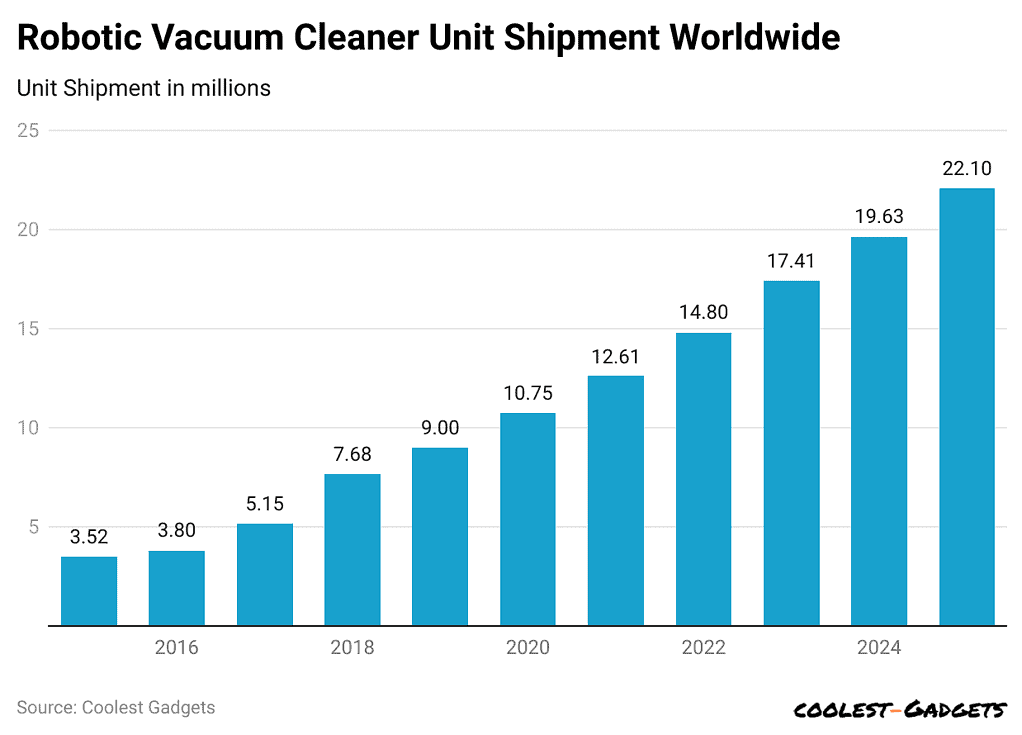
(Reference: news.market.us)
- Vacuum Cleaner Statistics stated that since robot vacuums easily sync with voice-controlled assistants like Amazon Alexa and Google Assistant, they have become a natural part of the smart home setup.
- Their ability to work with automated home systems makes them a popular option for consumers looking for easy and efficient cleaning solutions.
- Brands such as Shark, iRobot, Roborock, and Ecovacs have launched hybrid vacuum models with retractable mop pads and advanced mapping technology. These innovations allow the devices to distinguish between carpets and hard floors, ensuring efficient and targeted cleaning.
- With 66% of U.S. homes (over 87 million households) having pets, the demand for robot vacuums that can automatically clean pet hair and dander daily has increased.
Vacuum Cleaner Regional Statistics
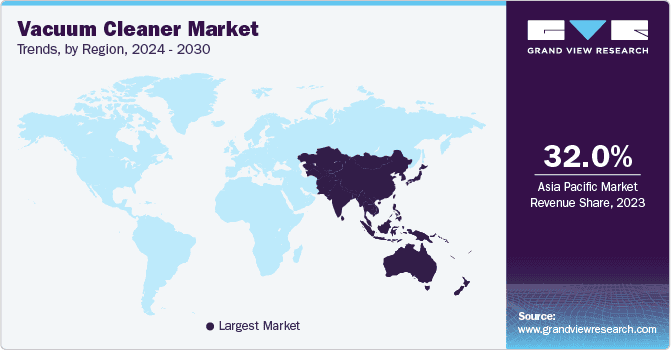
(Source: grandviewresearch.com)
- The vacuum cleaner market is expected to bring in USD 46.87 billion in revenue worldwide in 2025. The industry is predicted to expand at a yearly growth rate of 3.64% (CAGR 2025-2030).
- Vacuum Cleaner Statistics stated that China is set to generate the highest revenue among all countries, reaching USD 13.50 billion in 2025.
- In 2025, each household is expected to contribute an average of USD 22.73 in revenue to the vacuum cleaner market.
- The total number of vacuum cleaners sold is expected to reach 286.13 million units by 2030. The market volume is forecasted to grow by 1.16% in 2026.
- In 2025, the average household is estimated to own 0.13 vacuum cleaners.
- The United States remains a key player in the global market, with strong demand for smart and high-tech vacuum cleaners, reflecting the increasing popularity of automated home-cleaning devices.
Vacuum Cleaner Product Insight Statistics
- In 2023, canister vacuum cleaners made up 25% of total revenue, thanks to their popularity for cleaning different surfaces, fitting into small spaces, and moving around obstacles with ease.
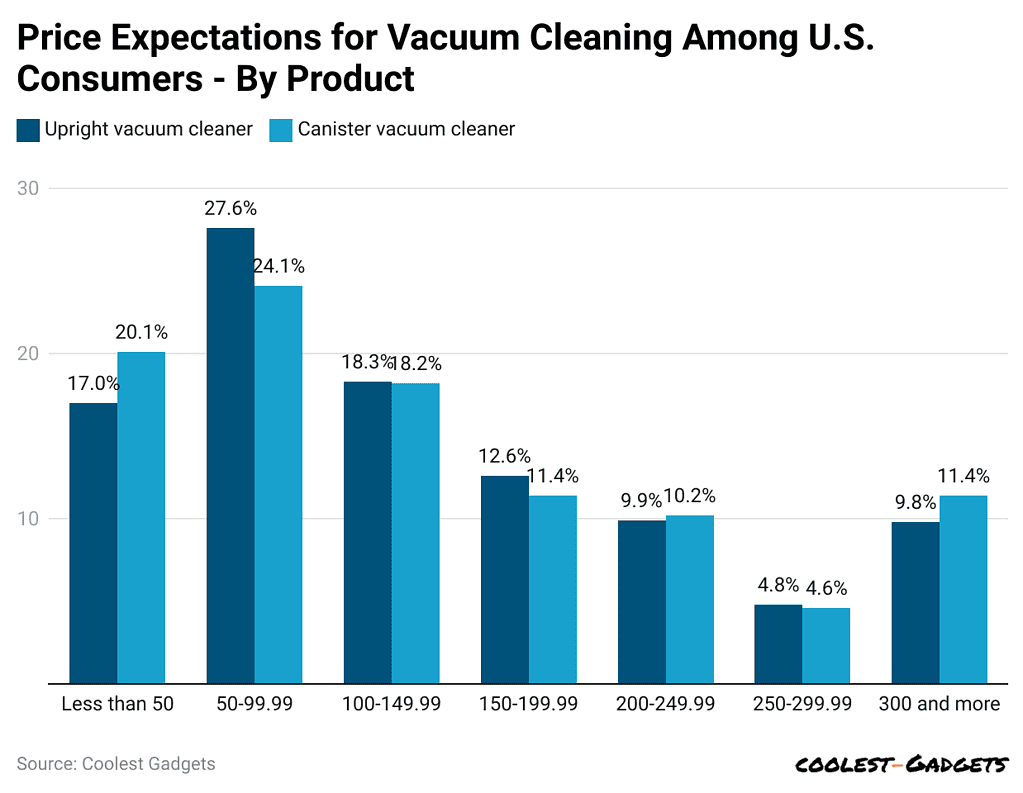
(Reference: news.market.us)
- The demand for these vacuums is also increasing due to models with HEPA filters, which help reduce the risk of allergies and asthma.
- For instance, PUPPYOO’s T12 Plus Rinse features a 6-stage HEPA filtration system to enhance air quality.
- The robot vacuum category is predicted to have the fastest growth rate (CAGR) from 2024 to 2030 as more people prefer automated cleaning options.
- Vacuum Cleaner Statistics stated that, unlike regular vacuums, these smart devices clean on their own and can reach tight corners.
- The rising demand is driven by features like self-charging, smart home compatibility, and voice control through digital assistants, making them even more appealing to consumers.
Leading Reasons for Using Robot Vacuum Cleaner Statistics
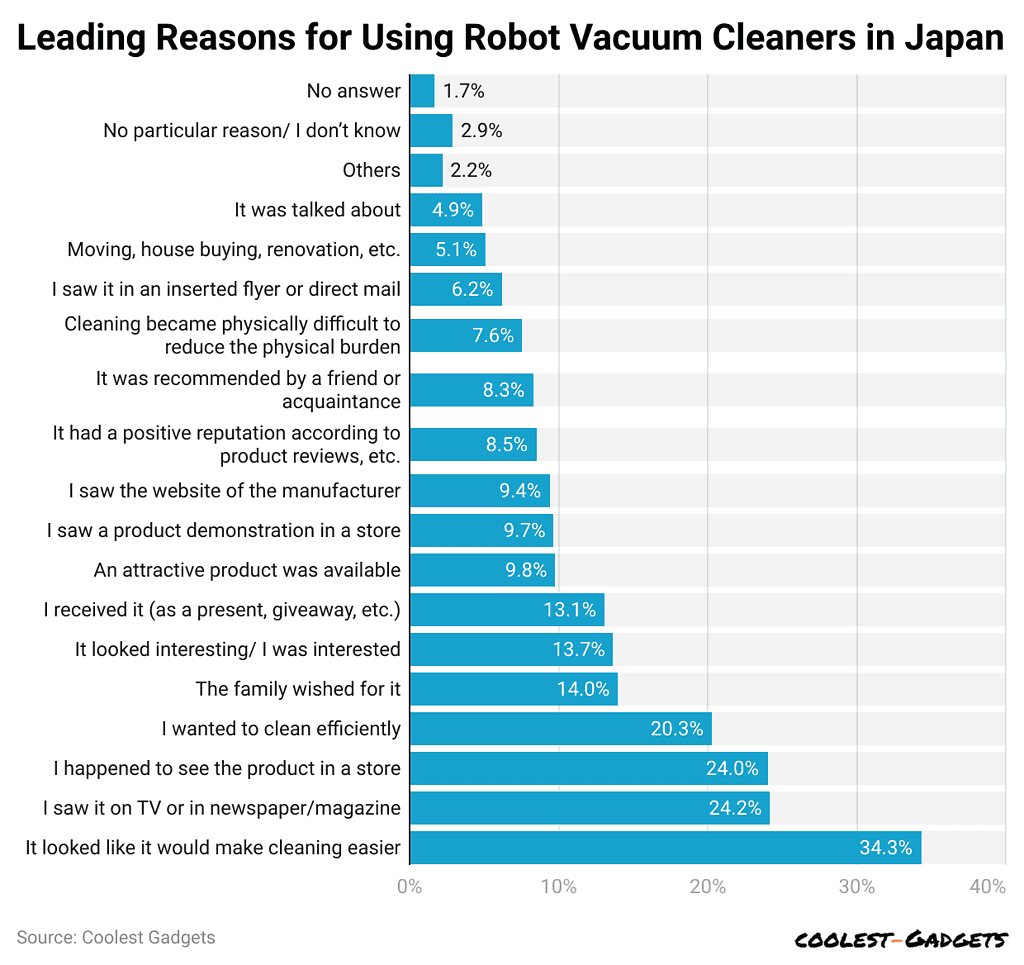
(Reference: news.market.us)
- Media exposure was another major factor, as 2% of users were influenced by advertisements on TV, in newspapers, or in magazines. Similarly, 24% decided to purchase one after seeing the product in-store.
- The efficiency of robot vacuums in cleaning convinced 3% of users to purchase them. Family recommendations influenced 14%, while 13.7% found these devices appealing or fun to use. Another 13.1% received them as gifts or promotional giveaways.
- Other reasons included the availability of attractive models (9.8%) and in-store demonstrations (9.7%). Company websites (9.4%) and customer reviews (8.5%) also played a role in purchase decisions.
- Vacuum Cleaner Statistics stated that 3% bought a robot vacuum based on recommendations from friends, and 7.6% cited difficulty using traditional vacuums due to physical limitations.
- Smaller factors included advertisements through flyers or mail (6.2%), life changes such as moving or home renovations (5.1%), and general product popularity (4.9%).
- A small percentage had other reasons (2.2%), no particular reason (2.9%), or did not provide an answer (1.7%).
Conclusion
The vacuum cleaner industry is experiencing steady growth due to technological advancements, increasing smart home compatibility, and shifting consumer needs. People increasingly opt for cordless, robotic, and multi-purpose models because they provide greater convenience, efficiency, and automation. Features such as pet-friendly designs, HEPA filters for improved air quality, and AI-based navigation are also influencing buying trends. Additionally, China, the U.S., and the Asia-Pacific region are among the fastest-growing markets, with a shift toward online shopping and smart technology.
As innovation continues, the vacuum cleaner market is expected to expand further, providing smarter, eco-friendly, and high-performance cleaning solutions for modern homes. We have shed enough light on Vacuum Cleaner Statistics through this article.
FAQ.
Each year, approximately 40 to 50 million vacuum cleaners are purchased in the United States, with upright models being the most commonly purchased. The vacuum cleaner industry is estimatedto expand at a rate of 9.6% between 2020 and 2028. Additionally, the global market for robotic cleaning devices is valued at approximately $2.5 billion and is expected to grow by 14.6% by 2025, driven by rising demand for automated and smart cleaning solutions.
The global vacuum cleaner industry was valued at $47.22 billion in 2024. Experts predict it will grow to $50.56 billion in 2025 and reach $90.05 billion by 2032, with an annual growth rate of 8.6%. In 2024, the Asia-Pacific region held the largest market share at 32.86%, leading the industry in sales and demand.

Saisuman is a talented content writer with a keen interest in mobile tech, new gadgets, law, and science. She writes articles for websites and newsletters, conducting thorough research for medical professionals. Fluent in five languages, her love for reading and languages led her to a writing career. With a Master’s in Business Administration focusing on Human Resources, Saisuman has worked in HR and with a French international company. In her free time, she enjoys traveling and singing classical songs. At Coolest Gadgets, Saisuman reviews gadgets and analyzes their statistics, making complex information easy for readers to understand.







